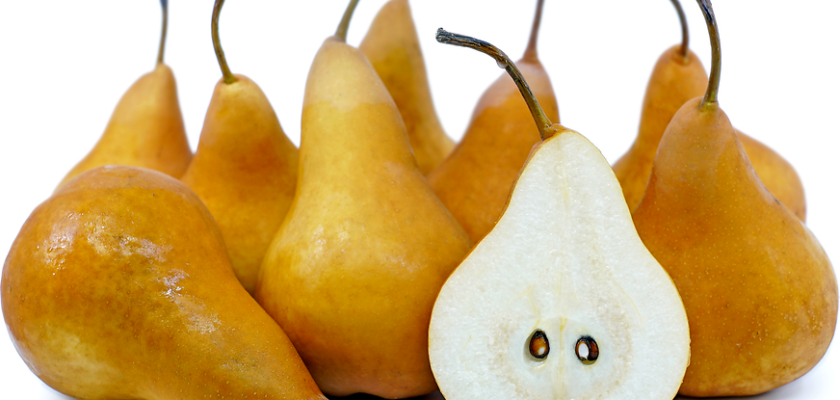Bosc pears are a popular variety of pears known for their distinct flavor, elegant appearance, and versatility in both cooking and snacking. If you’re considering purchasing Bosc pears, here’s a comprehensive buyer’s guide to help you choose the best ones:
- Appearance: Bosc pears are easily recognizable by their unique appearance. They have a long neck that gradually tapers to a rounded bottom. Their skin is russeted, often featuring a warm brown or golden color with a slight reddish blush. The texture of the skin is slightly rough, different from the smooth skin of other pear varieties.
- Texture: Bosc pears are known for their dense and firm texture, making them ideal for cooking and baking as they hold their shape well. When gently pressed, they should yield slightly, indicating ripeness, but they should not be overly soft.
- Ripeness: Bosc pears are typically harvested when they are slightly underripe because they continue to ripen after being picked. To determine ripeness:
-Check the neck near the stem: If it gives slightly to gentle pressure, it’s ripe.
-Avoid pears with excessive softness or visible bruising. - Color: While Bosc pears may not exhibit the vibrant colors of other pear varieties when ripe, look for a warm background color and slight blush. The skin may still have a firm texture, but the color is a good indicator of flavor development.
- Aroma: Ripe Bosc pears should have a pleasant, sweet aroma near the stem. If you can detect a fragrant smell, it’s a sign of ripeness.
- Storage: If you purchase underripe Bosc pears, store them at room temperature until they ripen. Once ripe, you can refrigerate them to extend their shelf life. Place them in the crisper drawer, away from other strong-smelling foods to prevent flavor transfer.
- Culinary Uses: Bosc pears are prized for their versatility in cooking and snacking:
-Fresh: Enjoy them as a snack or add them to salads for a sweet and crisp element.
-Cooking: Their firm texture makes them suitable for poaching, baking, grilling, and roasting in both sweet and savory dishes.
-Preserves: Bosc pears are excellent for making jams, chutneys, and preserves due to their dense flesh.
-Desserts: They’re a popular choice for pies, crisps, tarts, and other baked goods. - Pairing: Bosc pears have a distinct flavor profile that pairs well with various cheeses like blue cheese, goat cheese, and gouda. They also complement nuts, such as walnuts and pecans, as well as ingredients like honey and cinnamon.
- Season: Bosc pears are typically in season during the fall months, from September to April, depending on the region. This is when you’ll find the freshest and most flavorful options available.
- Varieties: There are a few different cultivars of Bosc pears, each with slight variations in flavor and appearance. The most common one is the classic Bosc pear, but you might also come across Red Anjou Bosc, which has a reddish skin color.
When shopping for Bosc pears, remember that personal preference plays a role in choosing the right ones. Whether you’re planning to enjoy them fresh, incorporate them into your cooking, or use them for creative culinary endeavors, Bosc pears offer a delightful and distinctive experience.
